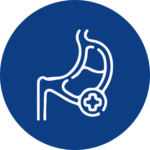 According to GLOBOCAN 2018, colorectal cancer is the third most common cancer in the world. In 2018, the incidence of colon cancer worldwide is about 2 million, and the number of deaths is close to 1 million. The great morbidity, in combination with the high mortality and its late diagnosis, determine its social importance.
According to GLOBOCAN 2018, colorectal cancer is the third most common cancer in the world. In 2018, the incidence of colon cancer worldwide is about 2 million, and the number of deaths is close to 1 million. The great morbidity, in combination with the high mortality and its late diagnosis, determine its social importance.
The most common symptoms include iron-deficiency type anemia, change in defecation rhythm, weight reduction, and manifestations of intestinal obstruction. However, the first manifestation of clinical symptoms is not always from the large intestine but also from other organs outside the digestive system. In these cases, colon cancer is usually incurable due to the development of extracolonic dissemination and corresponding organ failure. Genetic factors, sedentary lifestyle, obesity, consumption of red meat, alcohol, smoking, and some metabolic diseases are considered the main risk factors for its occurrence.
We present the case of a 47-year-old woman with histologically verified simultaneous adenocarcinoma and carcinoid of the sigmoid colon, as well as the background of asymptomatic gastroesophageal reflux disease complicated by precancer of the esophagus and stomach – Barrett’s esophagus. Read the full article.
